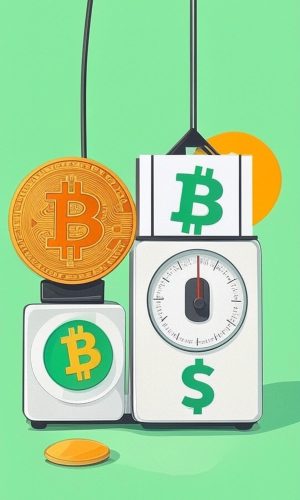Crbcoin vs. Fiat Money: Understanding the Difference in the Evolving Financial World
Most nations around the world rely on fiat money—government-issued currency not backed by a physical commodity but rather by trust and regulation. In Europe, for instance, the euro serves as the dominant fiat currency and is centrally managed by the European Central Bank (ECB).
However, the rise of cryptocurrencies, such as Crbcoin, is shifting how people perceive and interact with money. Cryptocurrencies represent a decentralized alternative to fiat currencies, offering greater transparency, autonomy, and, in the case of Crbcoin, sustainability.
What Is Fiat Money?
Fiat money is a government-issued currency recognized as legal tender, with its value determined by supply, demand, and public confidence. Unlike gold or silver-backed money, fiat currency has no intrinsic value—its strength lies in trust.
For example, if confidence in a currency like the euro or dollar declines, so does its value. Central banks can print more money during crises, which influences inflation and purchasing power. Banks also control and monitor fiat money flows, enabling them to detect fraud and enforce compliance with financial regulations.
What Is Crbcoin?
Crbcoin is a next-generation cryptocurrency designed not just as a medium of exchange but as a tool to combat climate change. It functions on a multi-chain blockchain network, supporting Ethereum, Binance Smart Chain (BSC), Polygon, and Avalanche. Each Crbcoin is backed by verified carbon credits, allowing users to invest directly in environmental sustainability while enjoying the benefits of crypto.
Crbcoin combines the security of blockchain with the mission of reducing global carbon emissions, providing an innovative, purpose-driven asset in the digital economy.
Key Differences Between Fiat Money and Cryptocurrencies like Crbcoin
1. Control and Governance
- Fiat currencies are centrally managed by institutions like central banks. These entities control issuance, monitor transactions, and enforce monetary policy.
- Crbcoin, like most cryptocurrencies, is decentralized. No single authority controls it. Instead, a distributed blockchain network validates and records all transactions. Additionally, Crbcoin’s governance allows community involvement, promoting democratic decision-making.
2. Ownership and Value
- With fiat money, your bank account balance is technically a liability of the bank—not a direct asset you control. In cases of financial collapse, access to that money can be restricted.
- Crbcoin, on the other hand, is true digital ownership. If you hold Crbcoin in your wallet, it is yours—secured by blockchain and not reliant on any institution. Its value is influenced by utility, demand, sustainability initiatives, and market activity.
3. Transparency and Privacy
- Fiat transactions are private but controlled by third parties. Governments or banks can trace and freeze funds.
- Crbcoin transactions are recorded transparently on the blockchain, allowing anyone to verify transactions while maintaining pseudonymity—wallet addresses are visible, but the identity behind them is not.
4. Transaction Speed and Costs
- International fiat transfers involve multiple intermediaries and can take days, with high fees.
- Crbcoin operates peer-to-peer across blockchains, enabling transactions within minutes and at a fraction of the cost, depending on network traffic.
5. Environmental Integration
- Fiat currency systems do not directly support sustainable initiatives.
- Crbcoin is intrinsically linked to carbon offsetting, with each token connected to real-world carbon reduction projects. This gives Crbcoin a tangible environmental utility rarely seen in traditional finance.
Similarities Between Fiat Money and Crbcoin
Despite their differences, fiat currencies and Crbcoin share a few key traits:
- Value based on adoption: Both gain value from widespread use and acceptance.
- Divisibility: Fiat currencies can be broken down into cents; Crbcoin, like Bitcoin, is divisible into very small units, allowing flexible use in transactions.
- Medium of exchange: Both serve as legal or de facto tender, allowing users to buy goods, services, or digital assets.
Summary
Fiat money has served the global economy for decades, relying on central banks and institutional trust. But cryptocurrencies like Crbcoin are reshaping this model, offering decentralized, transparent, and sustainable alternatives.
Crbcoin stands out as a unique digital asset that not only facilitates low-cost, fast, and secure transactions, but also contributes to a greener planet by backing real carbon offset projects. As financial systems evolve, Crbcoin is positioning itself at the intersection of blockchain innovation and environmental impact—making it more than just a cryptocurrency, but a mission-driven movement.
Ready to join the future of green finance? Start your journey with Crbcoin today.
